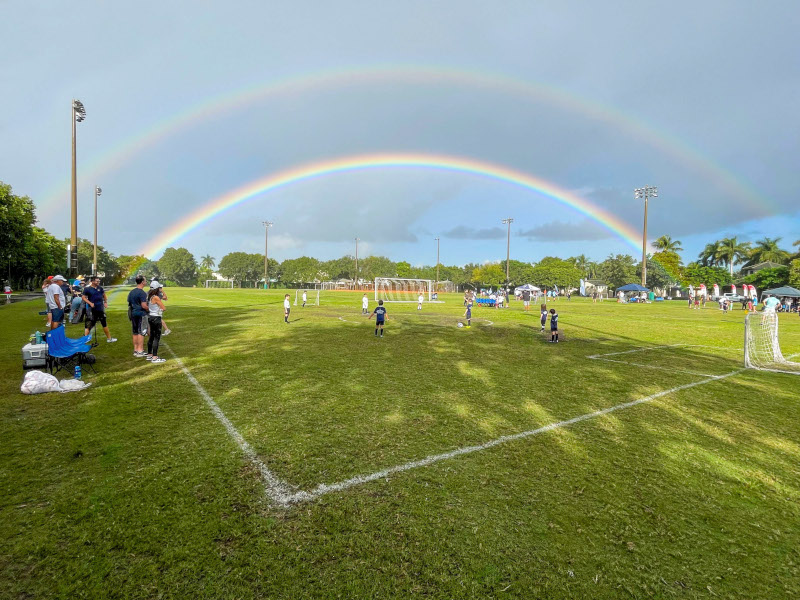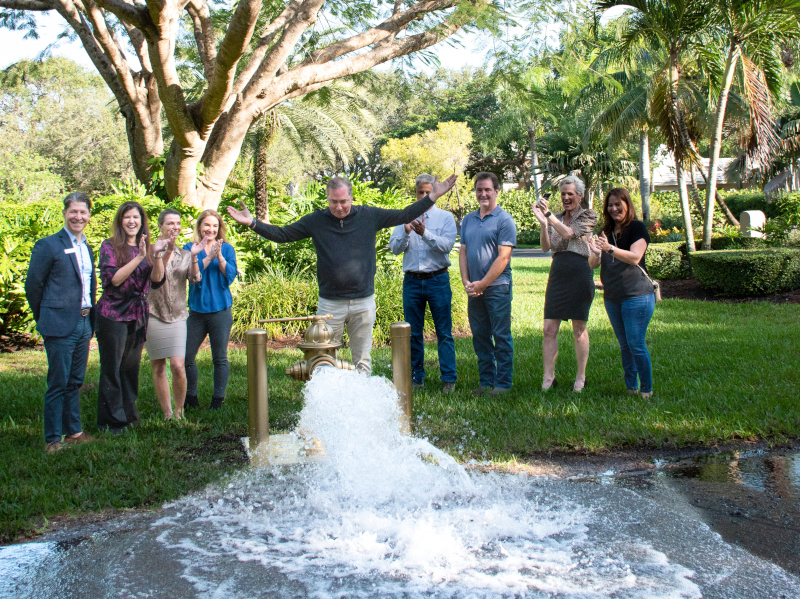Pinecrest, Florida
Preparing for the Future Through Sustainability and Community Engagement
Setting standards in sustainable living and community-centric development, pushing beyond the typical boundaries of local governance.
Pinecrest, Florida, a village established in 1996 amid the bustling growth of Miami-Dade County, is known for its lush landscape and vibrant community spirit. As a relatively young city, Pinecrest was born out of a necessity for closer governance and superior service delivery to its residents during rapid regional development.
Mayor Joseph M. Corradino explains the city’s unique foundation: “Pinecrest incorporated as part of the second wave of incorporations in Miami-Dade County. This was a response to the fast-paced growth and the county’s increasing difficulty in providing neighborhood-specific services like local governance, land use, zoning, and police services.” He elaborates on the city’s commitment to maintaining a high standard of living, saying, “Our focus has always been on enhancing the character of the community and improving its quality of life.”
One of the defining features of Pinecrest is its commitment to personalized service, often likened to a ‘concierge-level’ of attentiveness. This approach ensures that residents have their needs met and feel genuinely supported by their local government. “We offer a very high individual level of service,” Mayor Corradino adds. “Our staff and elected officials have the bandwidth to communicate almost immediately, one-on-one, with any resident to address their concerns and help them find solutions.”

Strategic Development and Community Engagement
Pinecrest is a hub of natural beauty and residential tranquility and a center of thoughtful urban planning and community development. Village Manager Yocelyn Galiano provides insight into the Pinecrest Parkway Master Plan, one of the key development projects shaping the future of Pinecrest.
“We recently completed the vision plan for the project, a significant community engagement effort. We gathered input through surveys and numerous town hall meetings,” she shares. This participatory approach led to a revamped vision for the parkway, particularly affecting the US-1 corridor, a crucial commercial stretch that borders the west side of Pinecrest.
Galiano highlights, “The exercise called for changes to our zoning code, including overlay districts that allow for mixed-use development, particularly in areas near our transit services like the Metrorail and the South Dade Busway.”
The changes aim to accommodate and foster transit-oriented developments, reflecting a broader trend towards more sustainable urban living spaces that are accessible and community-focused. “This is about looking at the entire corridor and potentially making changes that allow for more mixed-use development,” Galiano explains, pointing out the county’s ongoing reevaluations and the construction of new transit stations.
Adding a real estate perspective is Hal Feldman, a Realtor with RE/MAX Advance Realty. “Pinecrest is both circumstantially and proactively blessed,” Feldman notes, highlighting the large, rare one-acre lots within the community’s borders and its serene yet accessible location. He praises the synergy between Pinecrest’s amenities and its governance, which he believes greatly facilitates his role as a realtor.
“It’s quite straightforward working with clients who can afford Pinecrest,” Feldman admits. “The combination of high-quality public and private schools, beautiful parks, and robust community programming makes it an easy sell to high-net-worth individuals and families looking for a blend of upscale living and community-oriented amenities.”
The Happiness Initiative
In an era marked by increasing awareness of mental health and societal well-being, Pinecrest is taking bold steps to address these issues and actively enhance the happiness of its residents. The village’s pioneering Happy Pinecrest People Initiative (HaPPI), in partnership with the World Happiness Foundation, exemplifies its efforts to create an environment where well-being is measured and meticulously cultivated.
Galiano is visibly enthusiastic about Pinecrest’s groundbreaking efforts in this area. “We’re the first in the nation to partner with the World Happiness Foundation as a city of happiness,” she says. This initiative involves a unique experiment to assess and enhance the residents’ happiness through specific, targeted programs. “We’re undertaking an experiment to quantify happiness levels and develop initiatives designed to improve people’s quality of life demonstrably,” she explains.
The impetus for such an innovative approach stems from broader societal challenges, including those exacerbated by the pandemic. Galiano acknowledges these pressures: “There’s a national trend, an epidemic of loneliness, and we’re seeing significant mental health issues post-pandemic.” She emphasizes the village’s strategy to counteract these issues by strengthening community bonds and improving overall quality of life.
Amidst these wellness-focused endeavors, Pinecrest is also confronting the challenge of housing diversity. Mayor Corradino discusses the changes in housing dynamics since the village’s incorporation. “Originally, Pinecrest featured smaller homes on large lots. Now, these lots are increasingly occupied by much larger homes, some as large as 25,000 square feet,” he notes. This evolution in property size and value has inadvertently led to issues of affordability and accessibility for various demographic groups within the community.
Recognizing the need for a more inclusive housing strategy, particularly considering the displacement of some community members, Mayor Corradino outlines the village’s approach to diversification. “We’re looking to diversify our housing stock, especially along the US-1 corridor where rapid transit lines are being developed,” he explains. The plan includes transitioning from single-family homes to more multifamily structures and higher-density mixed-use developments around transit stations.

Infrastructure and Development
As Pinecrest continues to evolve, significant investment in infrastructure and development projects is reshaping its physical and communal environment. Planning Director Stephen Olmsted provides a comprehensive overview of recent initiatives.
“We’ve completed major projects like the expansion of potable water services to all homes in Pinecrest, which was a significant undertaking by our Public Works Department,” he says. This project ensures that all residents can access reliable and safe water, a fundamental aspect of public health and well-being.
In addition to utility upgrades, the village focuses on improving pedestrian accessibility, an initiative that enhances connectivity and safety. “We have a strategic plan to increase connectivity to schools and parks that includes setting aside money in a designated sidewalk fund,” Olmsted explains.
Shifting focus to public service districts, Olmsted highlights several large-scale projects currently underway, which are set to transform the local landscape. “There are numerous projects, such as the $50 million improvements at Gulliver School, which include a new gymnasium, classrooms, and a parking garage,” he notes.
“Temple Beth Am is also expanding, with a new auditorium, cafeteria, and welcome center, among other enhancements,” adds Olmsted, indicating a broader community focus in the village’s development strategy. He also mentions significant commercial developments that promise to bolster Pinecrest’s economic vitality. “Chick-fil-A was recently approved and is nearing the construction phase, and we have major automotive dealers like Kendall Toyota and Lexus of Kendall, which are vital employers in our area, expanding their facilities,” he states.
Supporting Local Businesses
In Pinecrest, community spirit extends deeply into the village’s economic strategies. This includes supporting the local economy by enhancing business districts’ aesthetic and functional aspects. Olmsted elaborates on the collaborative efforts to bolster local enterprises.
“In partnership with the Miami-Dade Beacon Council and the Pinecrest Business Association, we’ve engaged directly with business owners to pinpoint their needs,” he states. This has led to significant enhancements within the village’s shopping centers. “Two major shopping centers are currently undergoing facelifts. Additionally, we ensure that professional service providers within these centers receive the necessary support to maintain their properties, keeping the landscaping, facades, and parking areas in top condition,” he adds.
Galiano chimes in to discuss how Pinecrest uses its platforms to amplify the presence of local businesses, encouraging residents to shop locally, which has become especially crucial following the economic impacts of the pandemic. She further outlines the strategic vision for enhancing Pinecrest’s commercial appeal. “We lack a traditional downtown area, as our commercial district primarily consists of strip malls along US-1. With the updates to our zoning code and vision plan, we aim to attract redevelopment that introduces lifestyle centers, offering more restaurants and outdoor cafes,” she says.
Infrastructure and Green Spaces in Pinecrest
As Pinecrest evolves, the local government has strategically addressed the dual needs of upgrading infrastructure and enhancing community spaces. Vice Mayor Shannon del Prado emphasizes the importance of parks in contributing to Pinecrest’s reputation as a top community within Miami-Dade County.
“Our parks play a significant role in our community’s life. We recently acquired two new parklands for development into passive and active recreation spaces,” she states. This focus on green spaces is part of a broader strategy to enrich the community’s recreational infrastructure, ensuring residents have ample opportunities to engage with nature and each other.
Expanding on this, del Prado mentions the new parks, specifically Gary Matzner Park and Aleyda Mas Park, which are slated for different uses. “One will be a passive park, while we’re considering turning another into a community building facility for adults,” she explains. These spaces are intended to serve as ‘third places’—essential public spots outside work and home environments where community members can relax and socialize.
Mayor Corradino then touches on enhancements to digital connectivity and stormwater management, reflecting the village’s proactive stance on infrastructure modernization. “We’re improving internet service across the community and implementing a comprehensive stormwater master plan to handle increased rainfall and prevent flooding,” he says. This plan is supported by substantial grants that facilitate the construction of necessary drainage systems, ensuring Pinecrest remains safeguarded against extreme weather events.
Pinecrest’s Focus into 2025
As Pinecrest moves forward, the leadership team has clearly articulated its critical priorities for the remainder of 2024 into the second quarter of 2025. These priorities are not just about maintaining the status quo but are aimed at significant enhancements that address infrastructure needs and environmental sustainability.
Mayor Corradino outlines the critical projects on the village’s agenda, emphasizing infrastructure upgrades essential for the community’s sustainability and quality of life. “Our foremost priority remains the septic to sewer conversion project,” he explains. This massive endeavor, expected to exceed $300 million in costs, is crucial for modernizing the village’s waste management systems.
Vice Mayor del Prado brings attention to Pinecrest’s environmental initiatives, particularly those aimed at reducing the village’s carbon footprint. “We are actively inventorying our greenhouse gas emissions and have implemented several measures to reduce our environmental impact,” she notes. This includes increasing the number of hybrid vehicles in the municipal fleet and increasing the village’s verdant canopy.
On her part, Village Manager Galiano reinforces the importance of the composting program as a pioneering effort in the region. “This was the first such initiative in South Florida, and it has set a benchmark for municipal environmental responsibility in Miami-Dade County,” she asserts. The pilot program’s success has paved the way for its expansion, promising even more significant environmental benefits for Pinecrest and potentially serving as a model for neighboring communities.
Through these strategic priorities, Pinecrest’s leaders are dedicated to fostering a community that balances growth with sustainability, ensuring that it remains one of the most desirable places to live in Miami-Dade County. Their efforts to enhance infrastructure, improve quality of life, and reduce environmental impact are not just plans but actions actively transforming the community.
AT A GLANCE
Pinecrest, Florida
What: A model community for sustainable living and innovative local governance
Where: Miami-Dade County, Florida
Website: https://www.pinecrest-fl.gov/Home
PREFERRED VENDORS
Gulliver Preparatory School – www.gulliverprep.org
Established in 1926, Gulliver Preparatory School is Miami’s school of choice for challenging, innovative, and personalized learning designed to meet the needs of a diverse and dynamic world. Serving 2,200 students in grades PK-12, Gulliver’s mission is to create an academic community devoted to educational excellence, with a personal touch, that fulfills each student’s potential.
Weiss Serota Helfman Cole + Bierman, P.L. – www.wsh-law.com
WSHC+B proudly serves as the village attorney for Pinecrest. We are especially gratified to work with elected officials and professional staff to deliver an unparalleled live-work-recreate experience for Village residents and visitors.
Florida-based WSHC+B serves businesses, governments and nonprofits with legal and professional services including land-use and real estate, corporate governance and transactions, technology, construction, labor and employment, dispute resolution, government law, governmental affairs and specialties including art, entertainment and sports, and airports and aviation.







